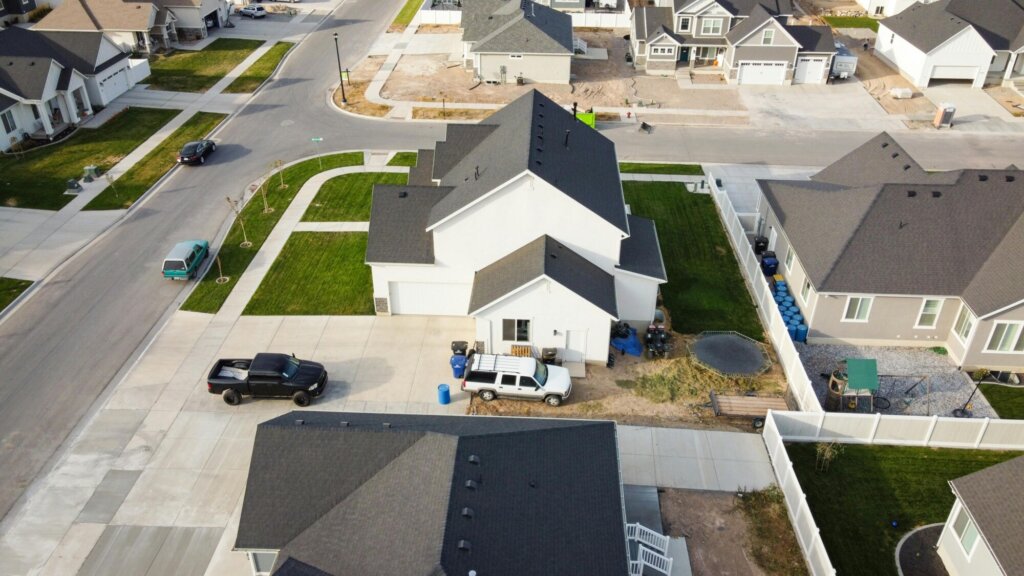Hardening Your Home
Wildfire safety steps to protect your home, loved ones, and the wider community.

Harden your home to reduce wildfire threats
Preparing (hardening) your home for wildfire involves understanding the risks and taking proactive steps. Your home can be threatened by:
- Direct flames: Typically coming from a wildfire or a neighboring house
- Radiant heat: Typically coming from nearby burning objects
- Flying embers: Embers can be particularly destructive – capable of igniting homes up to a mile away.
Increase your home’s chances of survival when wildfire strikes by following our home hardening guidelines below.
Retrofitting your home for wildfire-resistance:
Explore affordable retrofitting options to enhance your home’s defense against wildfires in California.
- Low-Cost Retrofit List
- Wildfire Home Retrofit Guide
- Guía de Adaptación Viviendas en Caso de Incendios Forestales
Take our Wildfire Survey to get a custom checklist.
Home hardening tips
Consider the following home hardening strategies for every area of your property:
Roofs
- Material choice: The roof is the most vulnerable part of your home. Homes with wood or shingle roofs are at high risk of being destroyed during a wildfire. Opt for composite, metal, clay, or tile roofing to resist fires.
- Ember sealing: Close off gaps under roof tiles and shingles to block wind-blown embers.
- Debris removal: Regularly clear leaves, pine needles, and other debris from the roof to prevent ignition.
Chimneys
- Chimney screening: Cover your chimney and stove pipe outlets with a non-flammable screen. Use metal screen material with openings no smaller than 3/8-inch and no larger than 1/2-inch to prevent embers from escaping and igniting a fire.
- Keep closed seasonally: Close the fireplace flue during wildfire season when the chimney is not being used.
Vents
- Mesh screening: Install 1/16-inch to 1/8-inch noncombustible, corrosion-resistant metal mesh over vents to block embers. Avoid fiberglass or plastic meshes, which can melt.
- Advanced venting: It is recommended to replace vents with California State Fire Marshal-approved flame and ember-resistant vents (State Fire Marshal Listed Wildland Urban Interface (WUI) Products Handbook) for enhanced protection.
- Be aware: These fire protection modifications may reduce airflow and ventilation to attics and underfloor spaces. Be sure to consult your local building official for ventilation requirements in your area before replacing or covering your vents and hire a licensed contractor to complete the project.
Windows
- Dual-pane installation: Fit dual-paned windows with at least one tempered glass layer to withstand fire-induced breakage.
- Size consideration: Limit the size and number of windows facing large vegetation areas to reduce radiant heat exposure.
- Screen addition: Add screens to all operable windows to catch embers and reduce heat.
Walls
- Material selection: Avoid flammable siding. Preferred materials include stucco, fiber cement, or specially treated wood.
- Full coverage: Ensure the selected materials extend from the foundation to the roofline for comprehensive protection.
Decks
- Fire-resistant materials: Construct decks from ignition-resistant building materials* like composite.
- Under-deck clearing: Maintain an ember-resistant zone beneath decks by removing all flammable materials.
- Slope consideration: For decks extending over slopes, establish a defensible space below to deter flame ascent.
Patio covers
- Matching materials: Use the same ignition-resistant materials on patio covers as those on your roof.
Eaves and soffits
- Construction: Box in eaves using ignition-resistant or noncombustible materials to prevent ember entry.
Garages
- Emergency tools: Store a fire extinguisher and basic firefighting tools within easy reach.
- Power backup: Equip garage doors with battery backups to ensure functionality during power outages.
- Ember seals: Apply weather stripping around and under the garage door to block ember entry.
Fences
- Material transition: Use noncombustible materials for the portion of the fence that connects to the house to prevent fire spread.
Addresses
- Clear marking: Your home’s address should be easily visible from the street for quick identification by emergency responders.
Driveways and access roads
- Clearance maintenance: Keep a minimum of 10 feet of vegetation clearance on either side of driveways and access roads.
- Emergency access: Ensure gates open inward and are wide enough for emergency vehicles, and keep overhead branches trimmed.
Rain gutters
- Regular cleaning: Keep gutters free from plant debris to prevent ember ignition.
- Drip edge installation: Add a noncombustible metal drip edge to protect the roof’s edge from ember exposure.
- Gutter guards: Use noncombustible gutter covers to keep out debris and reduce maintenance.
Water supply
- Hose availability: Install long garden hoses at your property that can reach all areas, including roofs and decks.
- Supplementary water sources: Consider installing pumps for pools or wells to increase water availability during fires.
*Note: “Ignition-resistant materials” are specially treated to resist ignition and slow burning when exposed to flames or embers, including noncombustible options and products approved by the State Fire Marshal.